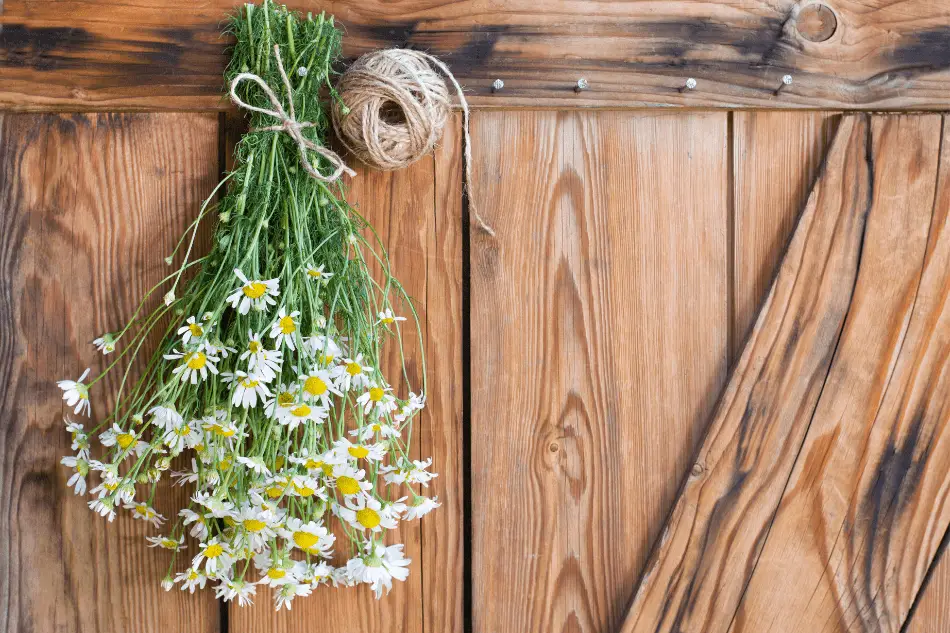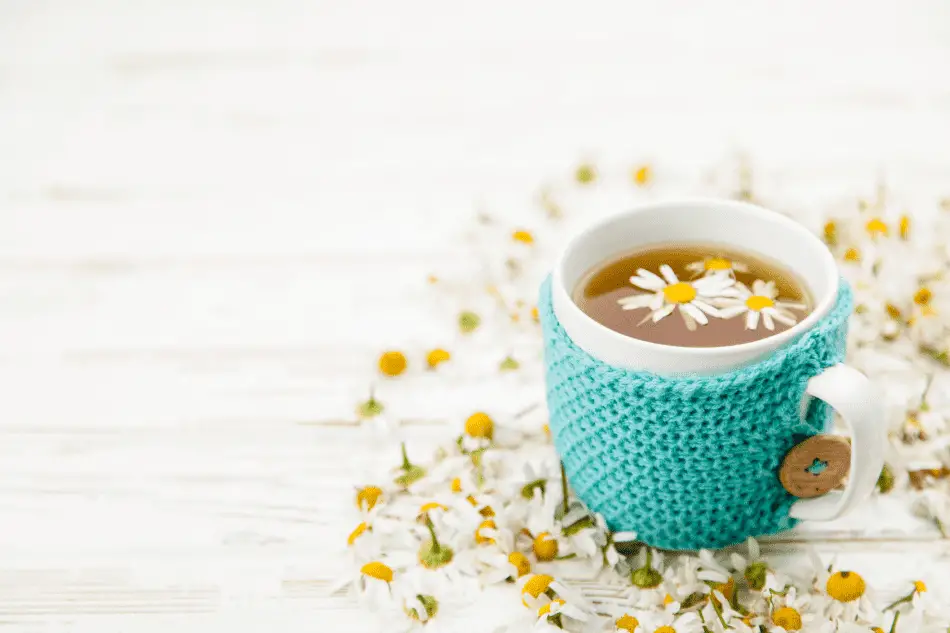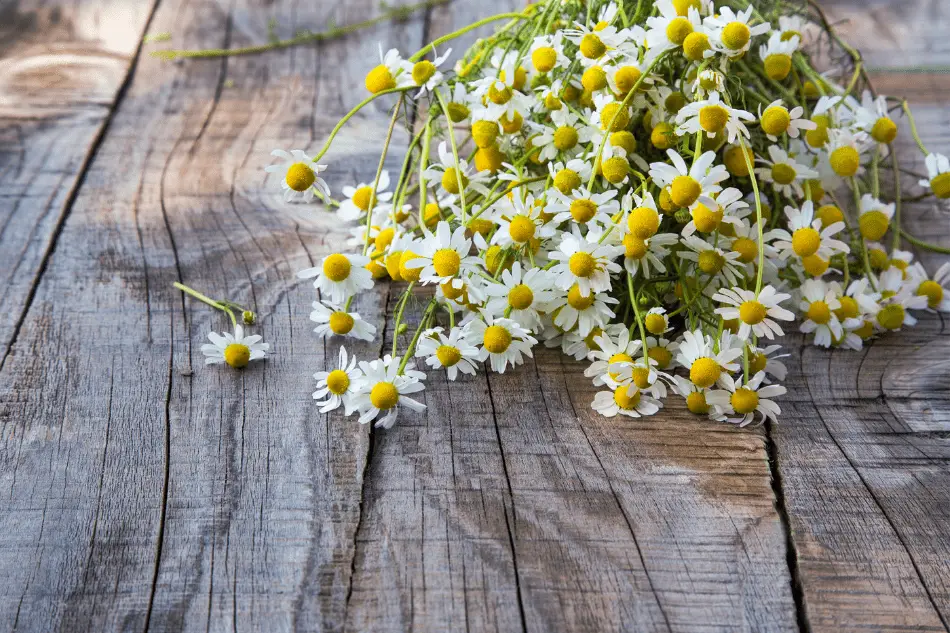Do you enjoy a nice cup of chamomile tea before bed? If so, you’re in luck! This article will teach you how to harvest chamomile for tea. Chamomile is a delicious and relaxing herb that can be enjoyed any time of day. It’s easy to grow and harvest, making it the perfect choice for beginner gardeners. In this guide, I will walk you through the steps involved in harvesting chamomile for tea.
To harvest chamomile for tea, wait until the flowers have fully bloomed. Cut the flower heads off the stem with scissors or a knife. Be sure to leave at least an inch of stem attached to the flower head. Wash and dry the flowers. Place the flower heads in a paper bag or container and store them in a cool, dry place.
Chamomile is an annual or biennial herb that can be easily grown from seed. The flowers of the chamomile plant are harvested to make tea and other preparations, including topical ointments.
Chamomile tea is a popular drink for its calming effects and flavor.
Preparation Before Harvesting
The preparation before harvesting chamomile for tea is very important. The plants should be watered thoroughly the day before, so they are well hydrated.
Chamomile can be harvested either in the morning or evening but avoid harvesting during the hottest hours of the day. In the morning, dew will still be on the flowers and this will help to keep them fresh.

The Tools You’ll Need
- A knife or scissors to harvest the chamomile flowers
- A container to put the harvested chamomile in
- A tea strainer (optional)
“To harvest chamomile for tea, wait until the flowers have fully bloomed. Cut the flower heads off the stem with scissors or a knife. Be sure to leave at least an inch of stem attached to the flower head. Wash and dry the flowers. Place the flower heads in a paper bag or container and store them in a cool, dry place.”
TEA CROSSING
Harvesting Chamomile for Tea

Step One: Identify the Chamomile Plants
The first step is to identify the chamomile plants. There are two types of chamomile plants, Roman and German. The Roman variety is more common and has a white flower while the German variety has a yellow flower.
Step Two: Harvesting the Flowers
The second step is to harvest the flowers. The flowers should be harvested when they are in full bloom. To harvest the flowers, cut them off at the stem with scissors or a knife. Make sure to leave at least an inch of stem attached to the plant.
Step Three: Washing and Drying the Flowers
The third step is to wash and dry the flowers. To wash the flowers, place them in a bowl of water and swish them around with your hands. Then, pour the water off and repeat until the water runs clear. To dry the flowers, place them on a paper towel or a drying rack.
Step Four: Separating the Flowers from the Stems
The fourth step is to separate the flowers from the stems. To do this, hold one end of a stem between your thumb and first two fingers and run your other hand down the length of the stem. The flowers will fall off into your hand while the stems will remain in your fingers.
Step Five: Packaging the Flowers
The fifth step is to package the flowers. To package the flowers, place them in a paper bag or an airtight container. The flowers will keep for up to two weeks if stored this way
Tips For Brewing Perfect Chamomile Tea
Brewing chamomile tea is easy and there are only a few things to keep in mind to make sure you get the perfect cup every time.

Here are five tips for brewing the perfect cup of chamomile tea:

Tip 1: Use Good Quality Water
Chamomile tea is made with water that is just below boiling temperature, around 190-200 degrees F. If your tap water tastes bad, it will also taste bad in your tea. Use bottled or filtered water if you want the best results.
Tip 2: Use Fresh Herbs
When harvesting chamomile for tea, use fresh herbs straight from the garden whenever possible. If you have to use dry herbs, make sure they are fresh and not old.
Tip 3: Use the Right Amount of Herbs
Use about two tablespoons of chamomile flowers for every eight ounces of water. This will give you a strong cup of tea. You can adjust the amount depending on your taste.
Tip 4: Steep for the Right Amount of Time
Steep chamomile tea for five to seven minutes for the perfect cup. Longer steeping times will produce a stronger tea.
Tip 5: Drink it Warm or Cold
Chamomile tea is delicious warm or cold. If you’re drinking it cold, add some honey and lemon to sweeten and flavor it.
Frequently Asked Questions
What Is Chamomile?
Chamomile (Matricaria chamomilla) is a dried flower that can be found pre-packaged at most health food stores. The flowers are small and have a sweet, apple-like taste. Chamomile tea infusion has a slightly sweet—fruity taste with an aftertaste of vanilla and caramel.
How Do I Make Chamomile Tea?
To make chamomile tea, you will need about one ounce of dried chamomile flowers per cup of water. Place the desired amount of chamomile in a teapot or teacup, and pour boiling water over the flowers. Allow the tea to steep for about five minutes, then strain and enjoy.
What Are The Benefits Of Chamomile?
Chamomile has a variety of potential health benefits, including being anti-inflammatory, antispasmodic, carminative, analgesic, and sedative. Chamomile is also a natural source of antioxidants and flavonoids.
Can I Drink Chamomile If I Am Breastfeeding?
There is limited research on the safety of chamomile consumption during lactation. However, as a general rule, it is always best to consult with your healthcare provider before consuming any new herbs or supplements while breastfeeding. Chamomile is generally considered safe to consume in small amounts while breastfeeding.
Final Words
Chamomile tea is one of my favorite beverages and is easy to harvest. Simply cut the flowers off the stem close to the head using a sharp knife or scissors. Make sure to harvest in the morning when the dew is still on the flowers, as this will help keep them fresh. Store your chamomile in an airtight container in a cool, dark place until you’re ready to use it. So go ahead, harvest your chamomile, brew, and enjoy!

